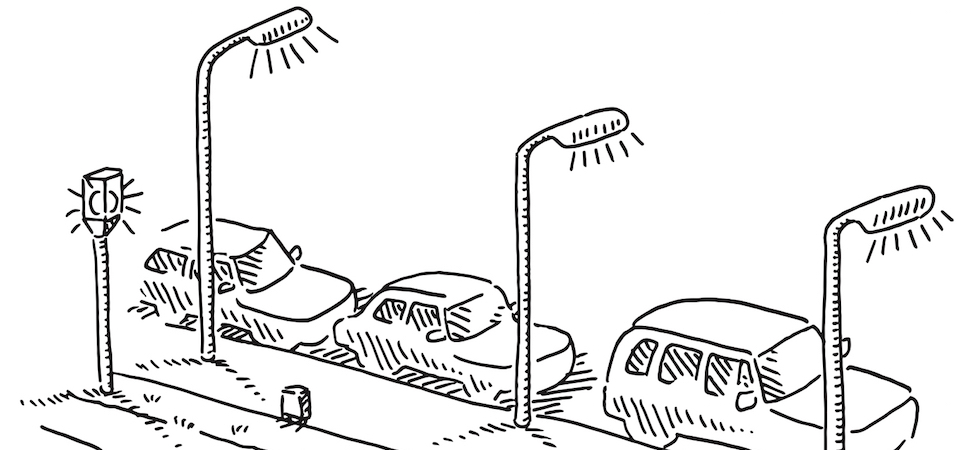Sam Edelstein sees exciting potential in new ways to get data, but there’s more to consider beyond the count.
Sam Edelstein is the City of Syracuse, NY’s first Chief Data Officer, where he has overseen the development and implementation of an open data policy and open data portal.
Living in Syracuse, a city with four seasons, is wonderful —we enjoy snowmen and sunbathing, apple picking and seed planting. But freezing and thawing takes its toll on streets and leaves us with a lot of potholes that crews need to fill. If we asked workers to track these manually, it would be clumsy and time-consuming, taking them away from maintaining the road.
Technology has helped us solve this. Every time our crews fill a pothole, they’re shooting asphalt through a hose. That hose’s trigger now has a sensor that counts each time it’s used. By matching that with data from the truck’s automated location device, we can get the count and location for every pothole. Eventually we’ll be able to build models that predict where potholes might occur.
As the Chief Data Officer in Syracuse, NY, the potential for data like this is exciting to me.
More and more, we’re using technology to help us count in ways that save the city time and gives us better, more reliable, information. We can also understand trends, and then take those historic trends and use them to predict what might happen in the future. In the past several years, we have launched an open data portal and a performance management dashboard. The state has also named us its flagship “smart city,” thanks to major new investments from the mayor.
At the same time, we need to be skeptical and focus on what genuinely improves the city’s operations, while preserving residents’ privacy.
Here are a few of the most important things we’ve learned about gathering city data, and counting what matters.
Data helps us serve cities more equitably.
Keeping a city well-lit is important for public safety. When street lights go out, a neighborhood may feel less safe, and pedestrian safety may suffer. In Syracuse, repairs to street lights only occur if people report an outage. Yet we know that reporting isn’t equitable in all parts of the city. That means repairs also aren’t equitable. If the mayor asks how many service requests a department has closed, we should have an answer. But have all the outages been fixed? We currently do not know for sure. We aren’t counting what is important, we are counting what is available, and that information can lead to inequitable service across the city. With more than 17,000 street lights in the city, it’s also unreasonable to rely on staff to identify every outage.
Enter technology. In August 2018 the Common Council in Syracuse approved a bond for $38 million so the City could purchase every street light from the electric utility, upgrade the lights to LED, and add sensor nodes to each light fixture. This will enable the City to control light levels, understand energy usage, and know exactly when a light goes out, in every part of town.
But sometimes predicting is better than sensing.
Syracuse is an older city in the northeast with water mains that are reaching the end of their useful life—some more than a century old. With hundreds of water main breaks per year, understanding which main is most at risk of breaking is critical. Sensor technology could have been useful, but we found a much more cost-effective solution. We looked through 100-year-old engineering record books to discover whether they were made of cast iron, ductile iron, or steel, and then worked with the Data Science for Social Good program to build a predictive risk model that relied on this and other attributes, including proximity to other breaks, age, and soil content. It’s not perfect, but it tells us enough about where we should invest dollars to improve infrastructure. So far, the model has performed as we expected—predicting 34 of the 50 most risky mains would break in the past three years.
Cities will need to balance data with residents’ privacy.
As technology improves, there is the potential to leverage cameras and other similar technologies to understand what is happening on every block. Using computer vision algorithms, we could analyze video feeds to count how many people are walking down a block, recognize a license plate as the car runs a red light or sits overtime in a parking spot, or even recognize people’s faces. Cities like San Francisco and Somerville, Mass. have already taken steps to regulate the use of facial recognition algorithms. Every city in the country will likely reckon with questions about how to balance the benefits of data-collecting technology with civil liberties.
In Syracuse, we are in the midst of creating a framework to help us make decisions about appropriate use of sensors and things like facial recognition. The framework will force us to contend with the positive and negative potential for technologies, and require justification from a diverse group of stakeholders.
Ultimately, it may mean that we are counting things less accurately in the city, but protecting the community in important ways.
